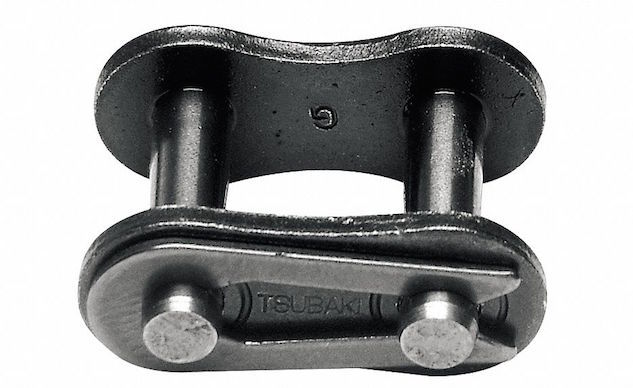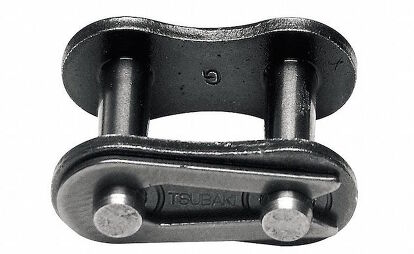Ask MO Anything: Can I Use a Clip-Type Master Link on My R1 Chain?
Dear MOby,
I guess it’s time for a new drive chain on my 20-year old R1 with 20,000 miles on it. The original seems a bit stiff in a few places. I was contemplating just cutting the old one off so as to avoid buying an expensive tool, but then it occurred to me I’d need the expensive tool anyway to properly peen on the new riveted link, or however you press the new one on. This led me to remembering how, in the old days, my bikes all had master links with clips. I used to put them on with pliers, and never had a problem. So my question is, can I use a clip-style master link on a modern O-ring 530 chain on a 150-horsepower bike?
Thanks,
Ken
Easy Street
Dear Ken,
This is another one of those controversial motorcycle topics. Any number of motorcyclists who’ve been around the block a few times will tell you they’ve been using clip-type master links their whole lives on everything from open-class roadrace bikes to desert racers, without ever having one come off. The conspiratorial-minded among them will go further and insist that endless riveted chains exist only because they’re cheaper to manufacture and install on a new bike – and they force people to buy expensive tools to replace them.
They might be correct. Chances are, you could use a clip-type master link on your new R1 chain and be perfectly fine, especially if you installed it according to the directions, facing the right way with the closed end toward the direction of chain travel. A dab of RTV on the clip is a good idea: Safety wire is even better, when there’s clearance.
The real reason the chain people invented the endless, riveted chain, though, is because it’s stronger and less likely to come apart. There are just as many old guys who have stories of using master links for decades, until one finally failed. It usually happens on old chains so stretched out the clip can no longer clip. Sometimes when that happens your chain just flies off and does no damage. Other times, it packs up around the front sprocket and makes a large hole in the engine case.
Chris Redpath of MotoGP Werks fame tells us he only uses riveted links when he puts new chains on; he mostly works on high-end street and race bikes. John Ethell at JETT Tuning says clip master links on dirt bikes are fine, but it’s riveted links for everything else. Especially race bikes: Decel corner-entry chatter shakes master links off, says JE, and then you are screwed.
As befits his station in life, Redpath prefers the high-end Whale chain tool, which sells for a couple hundred bucks.
Mr. Ethell says he’s fine with his proletarian RK rivet tool, which must be like this $90 RK Racing Chain UCT2100 Universal Chain Tool Kit we found on Amazon.
Like the Whale, the RK kit both drives out old pins and presses in new ones, and is a professional-quality item used by, ahh, professionals. There are cheap imitations of course, that may work perfectly okay once or twice. Maybe forever? Who knows. You generally get what you pay for. Motion Pro and a bunch of others make high-quality chain tools as well.
Shop for the RK Racing Chain Universal Chain Tool Kit here
All these tools work more or less the same way, but I really enjoyed watching the peaceful, Zen-like performance of Mr. Oishi in this 18-minute D.I.D. production explaining how its tool works, with English subtitles.
In my experience, it’s exceedingly rare for a procedure like this to occur with no cursing or violence whatsoever. Maybe make yourself a nice cup of green tea before you press play.
There is one other tool-free alternative if you’re going with an EK chain: an EK Screw Type Master Link.
Simple but genius, these have been around for quite a while now. After this link’s in place, you tighten those nuts with an 8mm wrench til they bottom out, then you remove the nuts, and just snap off the pins with pliers, leaving your link perfectly affixed. You will need a grinder or Dremel tool to clean up the protrusions a bit, according to people who use these – especially if clearance under your sprocket guard or someplace is tight. But, they’ll only work with EK chain: “Any master link is very specific to the chain it is made for,” says Jay at Moto-chains.com. “Any other application would be inappropriate. Side plate thickness, pin diameter, pin length, heat treating, tensile strength, O-ring thickness all can vary by manufacturer.”
So, the answer is yes, you can use an old-style clip master link with your new R1 chain. But we wouldn’t. Riveted links are more reliable, just as easy to install (with the right tool), and one less thing that can possibly go wrong.
Direct your motorcycle-related questions to AskMoAnything@motorcycle.com. If you can’t tell the difference between Fake News and real, you’ll be amazed at our depth of knowledge on all matters moto and otherwise.
Become a Motorcycle.com insider. Get the latest motorcycle news first by subscribing to our newsletter here.
More by John Burns





































Comments
Join the conversation
It's ok to use a clip as long as you never ever use WD40 as your lube.
LOL
That was a good vid, except...
"Check to make sure that the link is not stiff."
They don't tell you what to do if you find the link is stiff.
Does that mean you effed everything up and need to buy a new master link?
Are there remedial steps you can take?